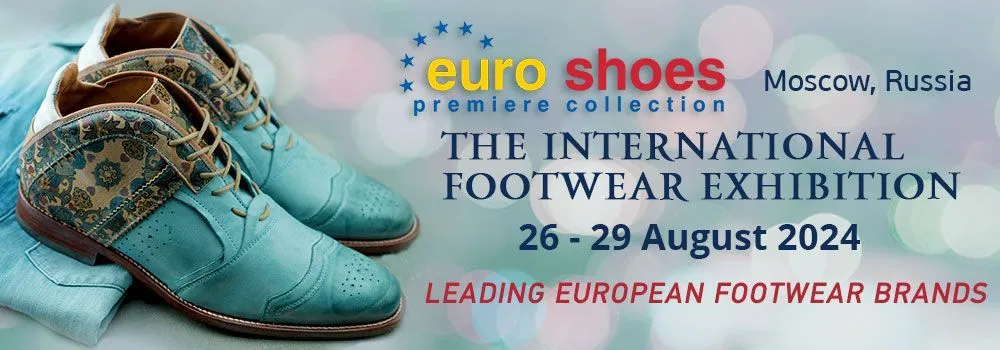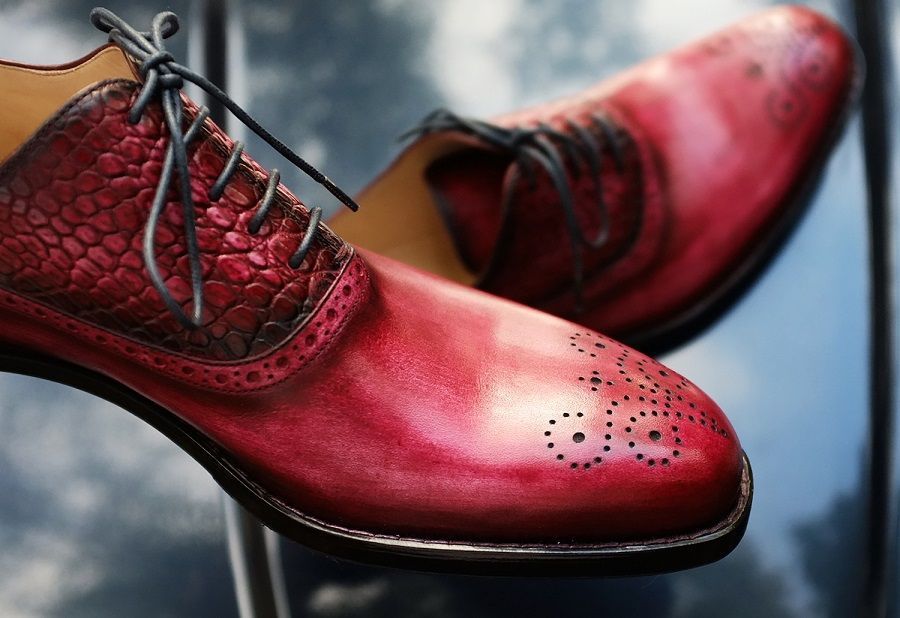
Lefort: “Color in shoes is the first step to consciously approach the formation of your style”

The founder of the Moscow shoe studio "Lefort" Nikita Zlobin, in the past - a tax lawyer. Having departed from the practice of conducting commercial disputes and criminal cases of an economic nature in 2013, he set about developing another business - an atelier for tailoring individual shoes to order. Over the three years of operation, the cost of the services offered by Lefort has almost tripled, today the workshop is one of the few in the Russian market that sells its customers impeccable comfort, using the patination of shoes that made famous brands such as French Berluti and Pierre Corthay.
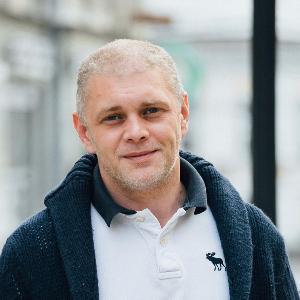 Nikita Zlobin - Founder of the Moscow shoe studio "Lefort".
Nikita Zlobin - Founder of the Moscow shoe studio "Lefort".
Who mainly orders the sewing of shoes - are these customers who have orthopedic problems? Are there any nuances that the consumer needs to know about?
Firstly, these are people with money, and secondly, those who for some reason do not like ready-made standard shoes. Everyone knows that the length of the fingers, the retina, and the structure of the ear are all a little different. Similarly, the foot. But the ordinary man in the street does not attach much importance to this, in the pursuit of money, a career, it is somehow not customary to pay much attention to his comfort.
In the finished shoes, standardized parameters of the foot are laid, while if the foot does not fall into a conditional standard invented by the factory, then the shoe will not be convenient for its owner: corns, joint pain will inevitably appear, the foot will become very tired when walking for a long time.
Women often say that, for example, the pumps of Casadei or any other world leader from last year were comfortable, and this year's models were impossible to wear. The reason is that the manufacturer has changed the block. When they say “comfortable last”, this does not mean that there is some kind of super-universal and convenient shoe last for everyone. Convenient in this case - suitable for the anatomy of a particular person. I think serious large companies order analytical reviews and study consumers: they look at the running completeness in the current and next year, carefully monitor the size range, choose the most popular anatomy and develop a last for it.
For example, we see that Ecco or Ralf Ringer are constantly moving away from modern fashion shoes in favor of semicircular and round toes. Because in this case, as in sneakers, the toes will always be a little free, and such a last will suit a larger number of consumers. In addition, they, like some English brands, try to make the maximum completeness in the beams, create models that do not need to be "planted" on the rise. It is no coincidence that about 90% of men choose “Oxfords” or “one-piece” for themselves when sewing shoes to order, because finished shoes of such a design will almost always not fit the height in the rise of the average Russian. Any standardization has nothing to do with the comfort and wearability of footwear; factory footwear is the result of a compromise between costs and selling price. Although I may be wrong, I am not a participant in the footwear market, we still sell service, not footwear.
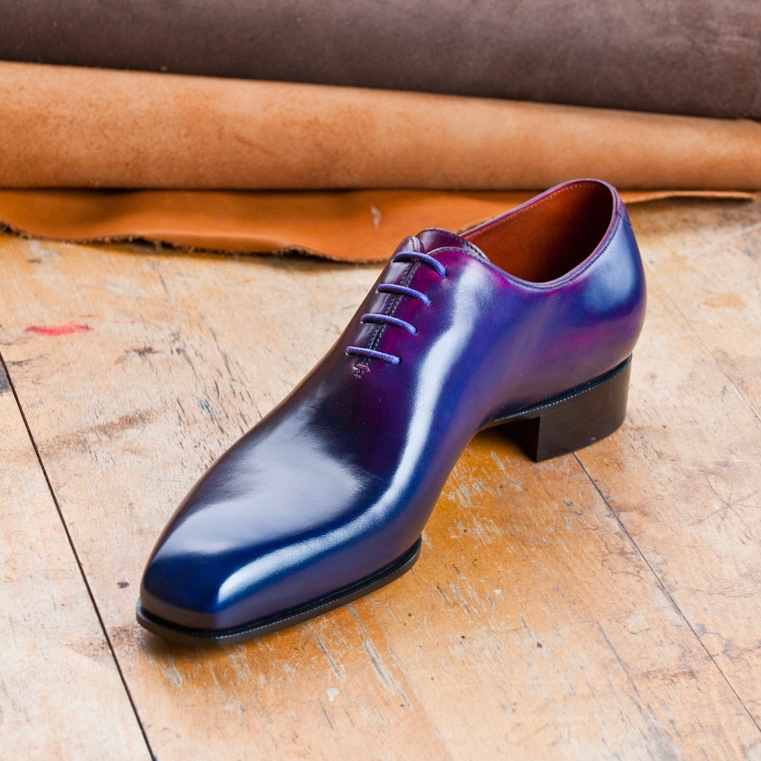 Shoes of the Moscow shoe studio "Lefort"
Shoes of the Moscow shoe studio "Lefort"
When you started your business in 2013, did similar workshops exist in Moscow?
Individual tailoring in Moscow has always been. If you make a request in the search engine “tailoring shoes to order in Moscow,” he will probably give out: the Antonio Shuz workshop, which was created by Anton Pechatnov, the classic costume workshop, there is also the Cayman Brothers company specializing in working with exotic leather, and older players. Now there are young guys from St. Petersburg - Afour, NotMySize, the Moscow brand Gottlieb Shwarz, but they all work in a more or less low-price segment. There are also workshop stories that often remain behind the scenes, working in b2b format. You will not find them on the Internet.
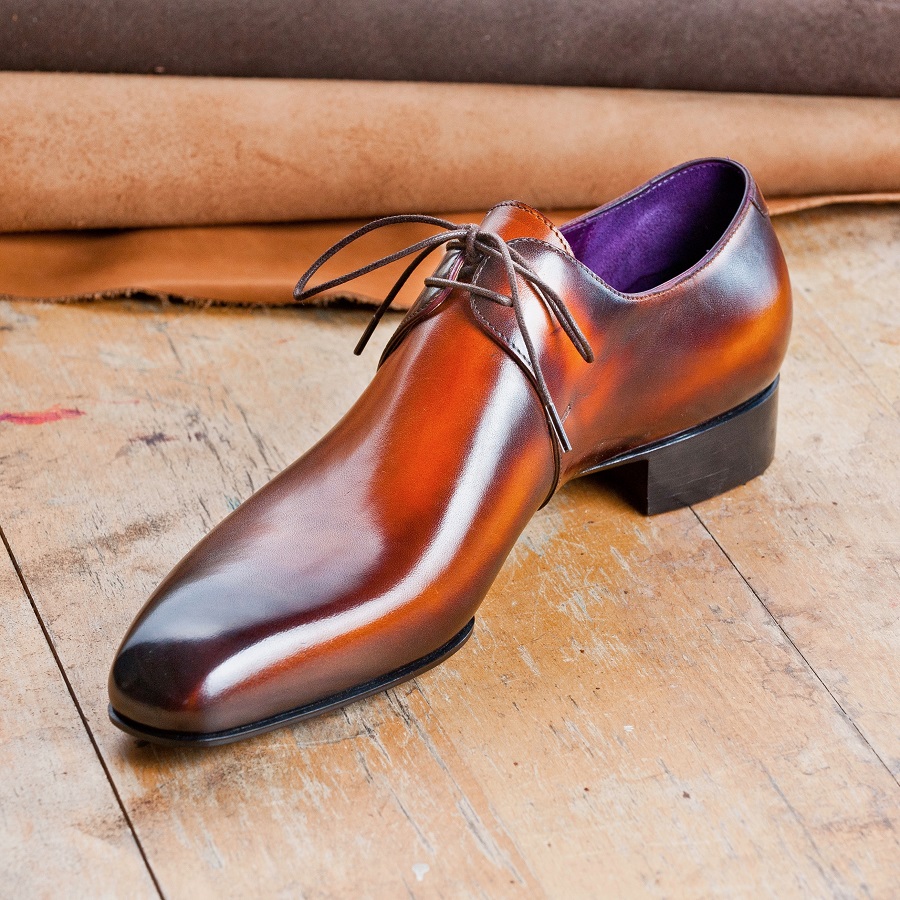 Shoes of the Moscow shoe studio "Lefort"
Shoes of the Moscow shoe studio "Lefort"
What do you think, maybe this new generation - these "young guys", new companies - will become the ones who eventually advance our shoe industry?
I think that percent of 70 of today's players will leave the market, they will not survive for one reason: they have the wrong math. Indo-sewing cannot be economized. One of my friends had an atelier for sewing leather interiors for cars, and he complained that when a customer enters a BMW interior and sees a “seven” with a leather interior there, he will not check the quality of the seams because he trusts the brand. And when they come to a small private studio, the first thing clients look at when accepting work is how the seams are made, because they are in plain sight. So it is here: the people who sew shoes to order, in their mass, are very demanding. And the price here is not an indicator. There are those who order tailoring for 20 thousand rubles, and they will ask as if they paid 100 thousand.
And then, when a company works to order in a low-price category, sooner or later it becomes difficult for it to compete with good, expensive China or English brands of finished shoes. British and Italian brands working in the mtm segment (English: made to measures - a technology that involves the completion of the last and the variability of the model range) are also trying to keep the price, and if I myself come up with an idea to buy English boots, I will think about spending I have 20 thousand rubles for tailoring shoes to order in Russia, or buy a ready-made pair of a famous brand. In principle, if a client's foot feels good in finished shoes, it probably doesn't need to be sewn to order.
Therefore, when I see someone discussing on the Internet that sewing shoes for 20 thousand rubles is expensive, I can’t participate in this discussion. I will be torn to shreds, because I believe that 20 of thousands of rubles for indo-sewing is just free. For example, the Gottlieb Schwarz workshop also started with 19 thousand rubles, now they have a price of 30 thousand, and they will increase it, and not even because their mathematics do not converge, but simply, in my opinion, they cannot provide that the number of orders that will allow them at this price tomorrow not to starve to death and develop. The more workshops compete in price, the less likely they are to survive.
When we started, we set the price slightly higher than the market price - 30 thousand rubles, and this did not frighten anyone. We finished 2014 quite well, and in 2015, due to the currency jump, customers in the mainstream category “sagged”, people stopped buying altogether. Today, offering a shoe-making service in the mid-price segment, it seems to me, is like selling custom-made pens to office clerks. The idea may not be bad, but there can be only one strong point - technologies, colossal investments, which none of our even potential competitors have. In 2015, we simply did not have consumers, and, having revised the model range, improving the quality, gradually raised the price to 80-90 thousand rubles per pair. I deliberately made the decision to produce less and more expensive, increasing the technological gap from the competition. For example, it was with the advent of our workshop that patinated footwear came to Russian indian tailoring. Although many call patinage the usual tinting and dusting of the toe of the shoe, hoping that customers do not understand this much, which is partly true.
There are two big differences between what we are ready to offer and what our clients are generally ready for. We have been working with shoes for many years, we work in the most relevant world techniques, tracking all the current trends, and our clients are two or three years behind us on average. They are ready to accept and order the models that we offered them much earlier. Some customers come with their own vision, often prefer shoes with round toes, but as we interact, they become interested and dive deeper into the topic of shoes, come to the understanding that the elongated shape of the last is beautiful, that there is no need to be afraid of colors.
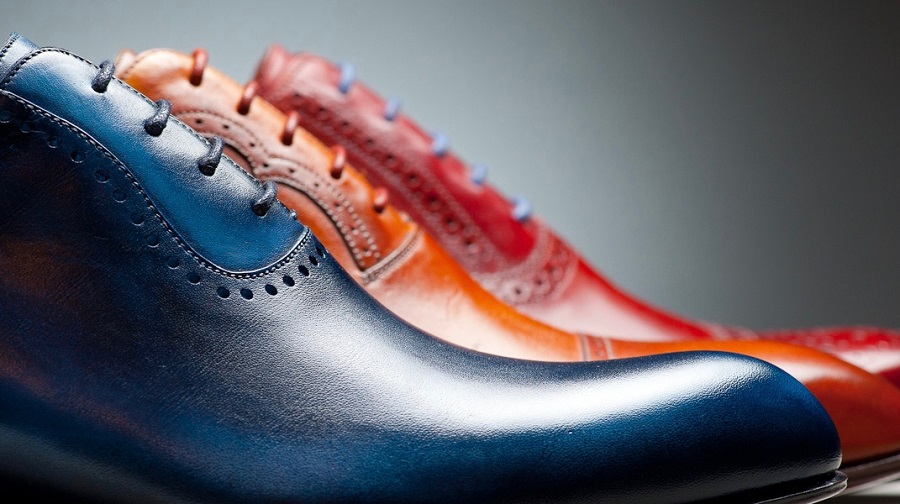 Shoes of the Moscow shoe studio "Lefort"
Shoes of the Moscow shoe studio "Lefort"
Perhaps you often come across conservatives?
Often. In the beginning they ask for a quieter, more dull color, and then the client goes to our meeting in our shoes, notices that they pay attention to the shoes, and begins to choose bolder models. However, working with color in shoes requires a lot of work with the image as a whole. Usually a person comes to the studio, orders a suit, and then picks up shoes for him, most often black or brown. This sometimes kills all the efforts of costume masters. Another thing is if he decided to order purple shoes. What to wear them with? Color in shoes is the first step to consciously approach the formation of your style, to think about how others will see and perceive you. Image may be different. You can order a classic model of shoes, but make it with tweed. But then you need tweed support in clothes - a hunting image, a certain jacket, vest, cut trousers. This is a deliberate order; in creating your own style, shoes are a good helper.
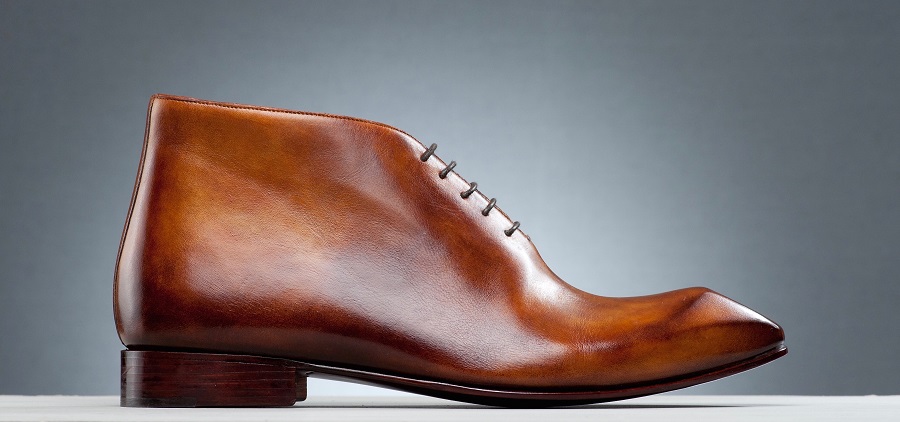 Shoes of the Moscow shoe studio "Lefort"
Shoes of the Moscow shoe studio "Lefort"
Can today's development of handicraft footwear production in Russia push the development of our shoe industry as a whole?
I don’t think so. There are a lot of components. Firstly, we are far behind Europe in terms of automation and mechanization of processes. Unlike us, European manufacturers sit on the finished semi-finished bottom. The demand for ready-made soles is enormous, because imported materials are expensive. For a small workshop working in a low price segment, the price of 800 rubles for a sole with a set-up heel is scrap, their finished shoes can cost 2-2,5 thousand rubles.
In Russia, only two factories produced a good shabrack - in Ostrogozhsk and Rybinsk. Ostrogozhsk had decent quality, but the factory closed, now there is some kind of confectionery production. Rybinsk remained, they took Italian technologists, but still the quality of the products became slightly lower. I must say that there are a lot of such related businesses with footwear that could be developed, but companies do not want to do this, and not because there is no money, there is simply no desire. Today they don’t want, and tomorrow we will buy Turkish shabrack or we will be left without accessories at all. And how is it possible to produce a mass product on imported components with high costs?
In addition, in Russia there are problems with the production of high-quality leather. By area, the warehouse of export samples of the Ryazan leather factory of the Russian Leather company is probably three football fields. In theory, the best samples are collected there, and now, after I break through two pallets of export material, I get only one decent leather - according to the standards of the second-class plant. They export goods that are semi-finished goods abroad, and there they are already bringing them to condition, and what is sold in Russia is raw materials of the fourth and fifth grades.
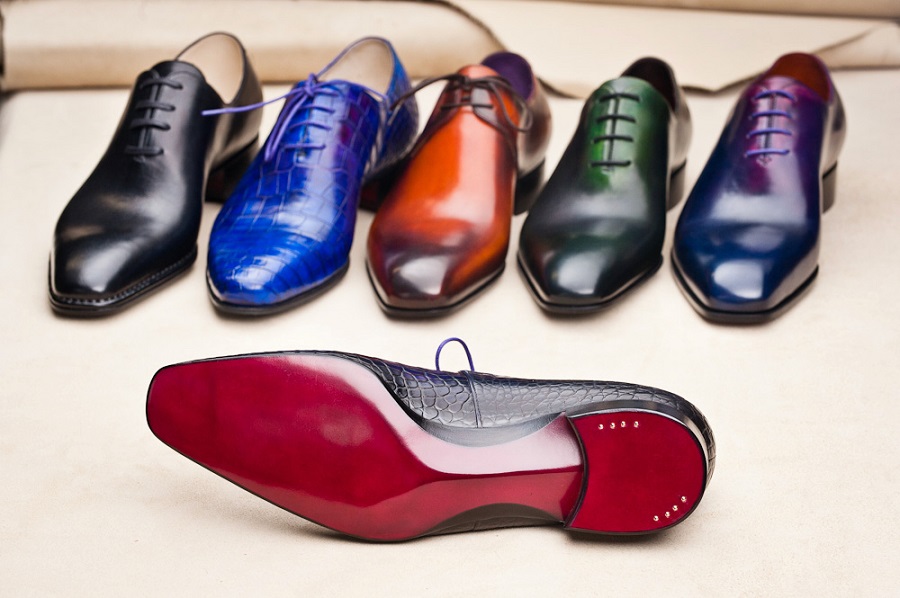 Shoes of the Moscow shoe studio "Lefort"
Shoes of the Moscow shoe studio "Lefort"
And where do you end up buying the material?
We find throughout Russia, I worked and tried to work with all leather plants. It happens that samples of good products are brought to the exhibition, and when you try to order the exact same article, and even offer a price three times higher, the list of reasons why this is impossible is started.
How does the business situation feel now? 2016 was a difficult year?
Of course, it is possible to whine indefinitely, but this will not be easier. I think that Moscow is impoverished by several tens of thousands of people. The outflow of the educated population with money from Russia is ongoing, and we are as indicators of the market: last year builders came to us, in this - no longer. Now there are more customers from retail.
Although, basically, we live on regular customers, approximately 90% of our customers turn to us for the second and third time. After all, men in their mass are conservatives, having chosen once, they are not looking for good from good. Shoes can become the same hobby as collecting knives or cars, you gradually get a taste. It can be made hooligan for jeans, it can be classic ... Of course, there are customers who just need comfortable shoes, because a person with legs really has problems, a complex anatomy. But we can surprise even customers of black shoes.
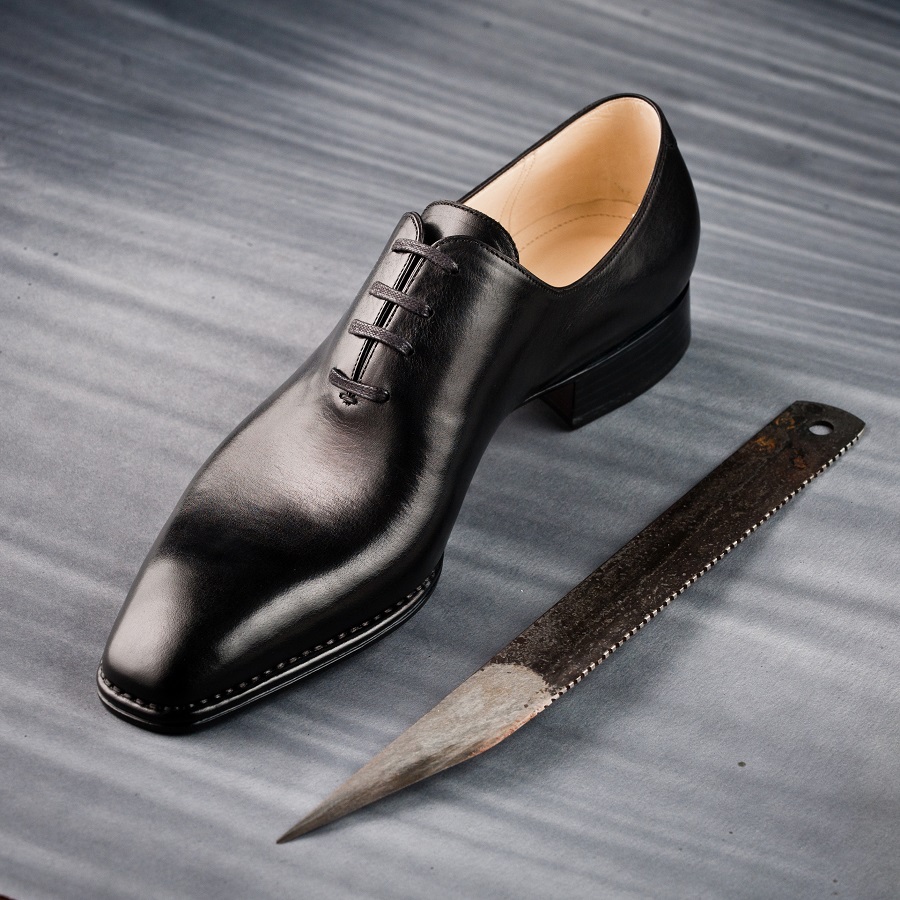 Shoes of the Moscow shoe studio "Lefort"
Shoes of the Moscow shoe studio "Lefort"
And do new customers come mainly on recommendation?
Someone from acquaintances, someone from the Internet. Social networks work, but the way from the moment when a person first found out about us on social networks, he thought about it, compared and then came to us, it is very long.
In general, the past 2016 was better than the previous 2015, but the language does not turn out to be a good one. There are problems, but the main thing is to understand where to move. In the new year, we began to produce non-formatted “near-sport” shoes on ready-made soles. We work with a crocodile, "exotic", we plan to expand. We have something to offer our customers - shoe painting, as we do, no one else does in Moscow. Well, we also have a couple of trump cards in our sleeves, but we won’t tell about them.
Interviewed by Marina Shumilina
This article was published in the 145 issue of the print version of the magazine.
| Please rate the article |
Materials on the topic
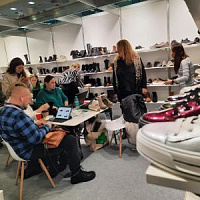
The international footwear exhibition Euro Shoes premiere collection was successfully held in Moscow

We are ready for active development in the Russian market
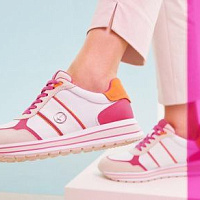
Bright colors of the approaching spring: shoe brand TAMARIS showed a new collection SS'24
IGI&Co presented at EURO SHOES a new line of Urban active sneakers with a GORE-TEX membrane

Turkish brand Vaneda on Euro Shoes
Popular
 Coach turned to Big Data analysis and won the interest of a young audience
American handbag brand Coach has planned the success of its Tabby model among a younger audience, Generation Z, by turning to big data analysis, abandoning traditional and analogue tools, such as human intuition or the ability of any executive to sense “which way the wind will blow,” writes B.O.F.
Coach turned to Big Data analysis and won the interest of a young audience
American handbag brand Coach has planned the success of its Tabby model among a younger audience, Generation Z, by turning to big data analysis, abandoning traditional and analogue tools, such as human intuition or the ability of any executive to sense “which way the wind will blow,” writes B.O.F.
 IDOL updates the concept
The IDOL brand, part of the Melon Fashion Group portfolio, opened the first flagship in an updated concept in the Aviapark shopping center in Moscow.
IDOL updates the concept
The IDOL brand, part of the Melon Fashion Group portfolio, opened the first flagship in an updated concept in the Aviapark shopping center in Moscow.
 Seven “sins” of the shoe business. How do owners harm the company with their own hands?
Why is Company X able to create a strong, profitable brand, but Company Y is struggling to make ends meet? Many people prefer to attribute success to luck, luck, or the support of strong patrons. And few people ask themselves the question: “What am I doing wrong?” Moreover, many entrepreneurs begin to harm their business from the first day of its opening. In this article, together with SR expert in the field of fashion business management and development, Maria Gerasimenko, we will look at the 7 main “sins” that business owners commit using specific examples.
Seven “sins” of the shoe business. How do owners harm the company with their own hands?
Why is Company X able to create a strong, profitable brand, but Company Y is struggling to make ends meet? Many people prefer to attribute success to luck, luck, or the support of strong patrons. And few people ask themselves the question: “What am I doing wrong?” Moreover, many entrepreneurs begin to harm their business from the first day of its opening. In this article, together with SR expert in the field of fashion business management and development, Maria Gerasimenko, we will look at the 7 main “sins” that business owners commit using specific examples.
 Louis Vuitton opens a new factory in Italy
Louis Vuitton has opened its second shoe factory in Italy. After opening the first one in Fiesso d'Artico in Veneto, the LVMH flagship brand has just opened a new production site dedicated to this category of footwear in the industrial zone of Civitano in the Marche region. There is also another brand production facility in Tuscany, where bags and leather accessories are produced, writes fr.fashionnetwork.com.
Louis Vuitton opens a new factory in Italy
Louis Vuitton has opened its second shoe factory in Italy. After opening the first one in Fiesso d'Artico in Veneto, the LVMH flagship brand has just opened a new production site dedicated to this category of footwear in the industrial zone of Civitano in the Marche region. There is also another brand production facility in Tuscany, where bags and leather accessories are produced, writes fr.fashionnetwork.com.
 The Euro Shoes@CAF exhibition will be held in Almaty
From March 11 to 13, the Euro Shoes@CAF (Central Asia Fashion) exhibition will be held in Almaty at the Atakent exhibition complex. The exhibition, which is the largest international event in the fashion industry in Central Asia, will present collections of clothing, shoes and accessories.
The Euro Shoes@CAF exhibition will be held in Almaty
From March 11 to 13, the Euro Shoes@CAF (Central Asia Fashion) exhibition will be held in Almaty at the Atakent exhibition complex. The exhibition, which is the largest international event in the fashion industry in Central Asia, will present collections of clothing, shoes and accessories.
 Euro Shoes will start operating on February 19 in Moscow!
The winter session of the international exhibition of footwear and accessories Euro Shoes premiere collection will be held in Moscow at the Expocenter from February 19 to 22. The organizers promise the presence of all the main participants at the exhibition, as well as new names from Europe, Asia and Russia.
Euro Shoes will start operating on February 19 in Moscow!
The winter session of the international exhibition of footwear and accessories Euro Shoes premiere collection will be held in Moscow at the Expocenter from February 19 to 22. The organizers promise the presence of all the main participants at the exhibition, as well as new names from Europe, Asia and Russia.
 American buyers couldn't buy Birkin bags and sued Hermès
French fashion house Hermès is facing a lawsuit in California from two customers who were unable to purchase exclusive Birkin bags. The fashion house is accused of unfair commercial practices.
American buyers couldn't buy Birkin bags and sued Hermès
French fashion house Hermès is facing a lawsuit in California from two customers who were unable to purchase exclusive Birkin bags. The fashion house is accused of unfair commercial practices.
 Why Rendez-Vous and Yandex Lavka released a “bread bag”
Shoe retailer Rendez-Vous announced the launch of a spring collaboration with Yandex Lavka and released a roll that resembles the shape of a woman’s handbag. This “Bread Bag” is presented in the Yandex.Lavka application at a price of 249 rubles. On the product packaging there is a promotional code for 1000 rubles, which can be spent in the Rendez-Vous network.
Why Rendez-Vous and Yandex Lavka released a “bread bag”
Shoe retailer Rendez-Vous announced the launch of a spring collaboration with Yandex Lavka and released a roll that resembles the shape of a woman’s handbag. This “Bread Bag” is presented in the Yandex.Lavka application at a price of 249 rubles. On the product packaging there is a promotional code for 1000 rubles, which can be spent in the Rendez-Vous network.
 Camper has released innovative sneakers - designers
Spanish brand Camper's new Roku sneaker features six interchangeable components to create up to 64 different looks and color combinations. Roku means "six" in Japanese.
Camper has released innovative sneakers - designers
Spanish brand Camper's new Roku sneaker features six interchangeable components to create up to 64 different looks and color combinations. Roku means "six" in Japanese.
 Christian Louboutin presented a collection in a cowboy style
At the Loubi Show in Paris, the French luxury brand Christian Louboutin presented its fall 2024 collection, following the trend - in the style of the Wild West. It included cowboy boots and rhinestone loafers.
Christian Louboutin presented a collection in a cowboy style
At the Loubi Show in Paris, the French luxury brand Christian Louboutin presented its fall 2024 collection, following the trend - in the style of the Wild West. It included cowboy boots and rhinestone loafers.
 Fashion Week takes place in Moscow
Fashion Week takes place in the Russian capital. Events include fashion shows, markets where you can purchase clothes, bags and accessories, and a B2B Showroom for fashion industry professionals.
Fashion Week takes place in Moscow
Fashion Week takes place in the Russian capital. Events include fashion shows, markets where you can purchase clothes, bags and accessories, and a B2B Showroom for fashion industry professionals.
 Turkish brand Vaneda on Euro Shoes
Street style, sport, outdoor, military – the main style directions of footwear of the company from Turkey
Turkish brand Vaneda on Euro Shoes
Street style, sport, outdoor, military – the main style directions of footwear of the company from Turkey
 Kari accuses Zenden of unfair competition and is suing the FAS
The largest Russian shoe chain, Kari, appealed to the Moscow Arbitration Court to declare the actions of the Federal Antimonopoly Service (FAS) illegal, writes RBC.
Kari accuses Zenden of unfair competition and is suing the FAS
The largest Russian shoe chain, Kari, appealed to the Moscow Arbitration Court to declare the actions of the Federal Antimonopoly Service (FAS) illegal, writes RBC.
 Fashion trends Fall-Winter 2023/24 for commercial footwear purchases
Permanent contributor to Shoes Report. Elena Vinogradova, an expert in sales and purchases in the fashion business, prepared an overview of the trends for the autumn-winter 2023/24 season especially for us.
Fashion trends Fall-Winter 2023/24 for commercial footwear purchases
Permanent contributor to Shoes Report. Elena Vinogradova, an expert in sales and purchases in the fashion business, prepared an overview of the trends for the autumn-winter 2023/24 season especially for us.
 MSCHF and Crocs launch "Big Yellow Boots"
Creator of the Big Red Boots, Brooklyn brand MSCHF has teamed up with American plastic clog and sandal brand Crocs for another oversized shoe. The new Big Yellow Boots will go on sale on August 9th.
MSCHF and Crocs launch "Big Yellow Boots"
Creator of the Big Red Boots, Brooklyn brand MSCHF has teamed up with American plastic clog and sandal brand Crocs for another oversized shoe. The new Big Yellow Boots will go on sale on August 9th.
 Five rules of professional lighting for a shoe store - something that is relevant in any season
When developing a lighting concept for shoe retailers, it is important to take into account not only the history of the brand, the architectural content of the premises, the target audience of the stores, but also the seasonality of the goods. With the onset of the cold season, client preferences change: bright weightless shoes are replaced by more massive models in discreet dark colors. Despite significant differences in summer and winter collections, the overall philosophy of the brand, its recognition should remain unchanged at any time of the year. Tatyana Ryzhova, an SR lighting expert in fashion retail, has identified five basic rules for a competent lighting concept for a shoe store for readers of the magazine, which will help to present winter assortment to customers in a winning way.
Five rules of professional lighting for a shoe store - something that is relevant in any season
When developing a lighting concept for shoe retailers, it is important to take into account not only the history of the brand, the architectural content of the premises, the target audience of the stores, but also the seasonality of the goods. With the onset of the cold season, client preferences change: bright weightless shoes are replaced by more massive models in discreet dark colors. Despite significant differences in summer and winter collections, the overall philosophy of the brand, its recognition should remain unchanged at any time of the year. Tatyana Ryzhova, an SR lighting expert in fashion retail, has identified five basic rules for a competent lighting concept for a shoe store for readers of the magazine, which will help to present winter assortment to customers in a winning way.
 Bertsy: what to look for when choosing a model
Bertsy and tactical boots are becoming more and more relevant footwear, and not only because of the start of the hunting season. In Russia, there are several dozen enterprises producing this type of footwear. Oleg Tereshin, Deputy Chief Technologist of ZENDEN, told Shoes Report about the differences and features of ankle boots and what you should pay attention to when buying them in specialized retail and online.
Bertsy: what to look for when choosing a model
Bertsy and tactical boots are becoming more and more relevant footwear, and not only because of the start of the hunting season. In Russia, there are several dozen enterprises producing this type of footwear. Oleg Tereshin, Deputy Chief Technologist of ZENDEN, told Shoes Report about the differences and features of ankle boots and what you should pay attention to when buying them in specialized retail and online.
 I doubt and object: how to find an approach to difficult clients?
How good and serene would be the work of a salesperson if the customers were calm, cheerful, always knew exactly what they wanted, and bought, bought, bought! It is a pity that this is possible only in dreams. Therefore, we will not dream, but we will act. Together with Maria Gerasimenko, a permanent author of SR, we understand the doubts and objections of buyers and build a strategy for working with them. Our expert pays special attention to the two main objections of buyers, on which 82% of sales are lost.
I doubt and object: how to find an approach to difficult clients?
How good and serene would be the work of a salesperson if the customers were calm, cheerful, always knew exactly what they wanted, and bought, bought, bought! It is a pity that this is possible only in dreams. Therefore, we will not dream, but we will act. Together with Maria Gerasimenko, a permanent author of SR, we understand the doubts and objections of buyers and build a strategy for working with them. Our expert pays special attention to the two main objections of buyers, on which 82% of sales are lost.
 EURO SHOES presents an updated section of the GLOBAL SHOES exhibition with collections of shoe and bag brands from Asian countries
EURO SHOES premiere collection is expanding. Along with the traditional pool of leading European footwear brands from Germany, Spain, Italy and Turkey, several dozen footwear and bag brands from the Middle Kingdom will be presented in the GLOBAL SHOES section at the Moscow Expocentre from August 29 to September 1.
EURO SHOES presents an updated section of the GLOBAL SHOES exhibition with collections of shoe and bag brands from Asian countries
EURO SHOES premiere collection is expanding. Along with the traditional pool of leading European footwear brands from Germany, Spain, Italy and Turkey, several dozen footwear and bag brands from the Middle Kingdom will be presented in the GLOBAL SHOES section at the Moscow Expocentre from August 29 to September 1.
 World Footwear Yearbook: Global footwear production reaches 23,9 billion pairs and is back to pre-pandemic levels
The Portuguese association of shoe manufacturers APICCAPS published the 13th edition of the international statistical bulletin World Footwear Yearbook for 2023, according to which in 2022 the production and export of shoes worldwide increased by 7,6% and 9%, respectively, and the world production of shoes reached 23,9 billion couples and returned to pre-pandemic levels.
World Footwear Yearbook: Global footwear production reaches 23,9 billion pairs and is back to pre-pandemic levels
The Portuguese association of shoe manufacturers APICCAPS published the 13th edition of the international statistical bulletin World Footwear Yearbook for 2023, according to which in 2022 the production and export of shoes worldwide increased by 7,6% and 9%, respectively, and the world production of shoes reached 23,9 billion couples and returned to pre-pandemic levels.
 Rostov footwear brand Novak presented a collection of sneakers and sneakers
In the spring-summer 2023 season, the Rostov-on-Don shoe brand Novak presented a cute collection of sneakers and sneakers for every day. The upper of the shoe is made of genuine leather, suede, nubuck, the sole is made of light EVA.
Rostov footwear brand Novak presented a collection of sneakers and sneakers
In the spring-summer 2023 season, the Rostov-on-Don shoe brand Novak presented a cute collection of sneakers and sneakers for every day. The upper of the shoe is made of genuine leather, suede, nubuck, the sole is made of light EVA.
 Jacquemus x Nike collaboration released
The second collaboration between Jacquemus and Nike, which has been talked about so much, is finally out. The appearance of the couple for many was a surprise. The model of Nike Air Force 1 sneakers, which was taken as the basis of the new collection, has undergone significant changes.
Jacquemus x Nike collaboration released
The second collaboration between Jacquemus and Nike, which has been talked about so much, is finally out. The appearance of the couple for many was a surprise. The model of Nike Air Force 1 sneakers, which was taken as the basis of the new collection, has undergone significant changes.
 Crocs releases a collaboration with Barbie
If Barbie ditched heels and wore crocs, they would be pink. It was this collection in pink that was released by the American brand of plastic clogs Crocs, for the release of the film "Barbie" in the United States.
Crocs releases a collaboration with Barbie
If Barbie ditched heels and wore crocs, they would be pink. It was this collection in pink that was released by the American brand of plastic clogs Crocs, for the release of the film "Barbie" in the United States.
 Shoe educational program: what shoe soles are made of
“What is the difference between TEP and EVA? What does tunit promise me? Is PVC glue? What is the sole of these shoes made of? ”- the modern buyer wants to know everything. In order not to smash his face in front of him and be able to explain whether such a sole suits him in soles, carefully read this article. In it, process engineer Igor Okorokov tells what materials the soles of shoes are made of and what makes each of them so good.
Shoe educational program: what shoe soles are made of
“What is the difference between TEP and EVA? What does tunit promise me? Is PVC glue? What is the sole of these shoes made of? ”- the modern buyer wants to know everything. In order not to smash his face in front of him and be able to explain whether such a sole suits him in soles, carefully read this article. In it, process engineer Igor Okorokov tells what materials the soles of shoes are made of and what makes each of them so good.
 How to set prices that will earn
Some businessmen still confuse the concept of margin with the concept of trade margins and set prices for their goods, guided solely by the example of competitors. No wonder they go broke! Analyst at the Academy of Retail Technologies Maxim Gorshkov gives several tips and formulas with which you can set not only ruinous, but also profitable prices.
How to set prices that will earn
Some businessmen still confuse the concept of margin with the concept of trade margins and set prices for their goods, guided solely by the example of competitors. No wonder they go broke! Analyst at the Academy of Retail Technologies Maxim Gorshkov gives several tips and formulas with which you can set not only ruinous, but also profitable prices.
 Sales of shoes and accessories: effective techniques for business rhetoric
Which speech modules are effective in communicating with potential and current customers of shoe stores, and which are not, Anna Bocharova, a business consultant, knows.
Sales of shoes and accessories: effective techniques for business rhetoric
Which speech modules are effective in communicating with potential and current customers of shoe stores, and which are not, Anna Bocharova, a business consultant, knows.
 We form the salary of sellers: expert advice
“How do you charge your consultants for personal or general sales?” Is one of the most popular questions causing a lot of controversy and gossip on the online forums of retail business owners. Indeed, how to properly form the earnings of sellers? But what about bonuses, where to get a sales plan from, do employees allow them to buy goods at discounted stores? In search of truth, the Shoes Report turned to a dozen shoe retailers, but no company wanted to disclose its motivation system - the process of its development was too complicated and individual. Then we asked four business consultants, and finally became convinced that the topic of seller motivation is very complex, because even our experts could not come to a common opinion.
We form the salary of sellers: expert advice
“How do you charge your consultants for personal or general sales?” Is one of the most popular questions causing a lot of controversy and gossip on the online forums of retail business owners. Indeed, how to properly form the earnings of sellers? But what about bonuses, where to get a sales plan from, do employees allow them to buy goods at discounted stores? In search of truth, the Shoes Report turned to a dozen shoe retailers, but no company wanted to disclose its motivation system - the process of its development was too complicated and individual. Then we asked four business consultants, and finally became convinced that the topic of seller motivation is very complex, because even our experts could not come to a common opinion.
 Technology Selling Issues
There is nothing worse than meeting the buyer with the words “Hello, can I help you with something?”, Because the seller works in the store just to help. Criticizing this well-established pattern of communication with the buyer, Andrei Chirkarev, business coach for effective sales and the founder of the New Economy project, shares the technology of truly selling issues with readers of Shoes Report.
Technology Selling Issues
There is nothing worse than meeting the buyer with the words “Hello, can I help you with something?”, Because the seller works in the store just to help. Criticizing this well-established pattern of communication with the buyer, Andrei Chirkarev, business coach for effective sales and the founder of the New Economy project, shares the technology of truly selling issues with readers of Shoes Report.
 The whole truth about Bayer. Who is he and how to become one?
Bayer is no longer a new, but still a popular and sought-after profession. It’s fashionable to be a buyer. Buyers are at the origins of the emergence and development of trends. If the designer offers his vision of fashion in the season, then the buyer selects the most interesting commercial ideas. It is on buyers that the policy of sales of stores and what, in the end, the buyer will wear depends on. This profession is surrounded by a magical fleur, often associated with a lack of understanding of what exactly is the work of a buyer.
The whole truth about Bayer. Who is he and how to become one?
Bayer is no longer a new, but still a popular and sought-after profession. It’s fashionable to be a buyer. Buyers are at the origins of the emergence and development of trends. If the designer offers his vision of fashion in the season, then the buyer selects the most interesting commercial ideas. It is on buyers that the policy of sales of stores and what, in the end, the buyer will wear depends on. This profession is surrounded by a magical fleur, often associated with a lack of understanding of what exactly is the work of a buyer.
 Fur, and not only: types of lining
In the production of winter footwear, various materials are used that are designed to retain heat and meet the requirements of consumers: natural sheepleather, artificial fur, artificial fur from natural wool and others. All types of lining fur have their own advantages and disadvantages. Let's consider the properties of each of them.
Fur, and not only: types of lining
In the production of winter footwear, various materials are used that are designed to retain heat and meet the requirements of consumers: natural sheepleather, artificial fur, artificial fur from natural wool and others. All types of lining fur have their own advantages and disadvantages. Let's consider the properties of each of them.
 Retail Arithmetic
Before you begin to solve specific problems, you need to find out how accurately all the leaders of your company understand the basic terminology of retail.
Retail Arithmetic
Before you begin to solve specific problems, you need to find out how accurately all the leaders of your company understand the basic terminology of retail.
 How to fire a worker without tears, scandal and trial
Sooner or later, any manager is faced with the need to part with an employee. Properly and on time the dismissal procedure will save the company money, and the boss himself - nerves and time. But why sometimes, knowing that a break in relations is inevitable, we put off the decision for months?
How to fire a worker without tears, scandal and trial
Sooner or later, any manager is faced with the need to part with an employee. Properly and on time the dismissal procedure will save the company money, and the boss himself - nerves and time. But why sometimes, knowing that a break in relations is inevitable, we put off the decision for months?


